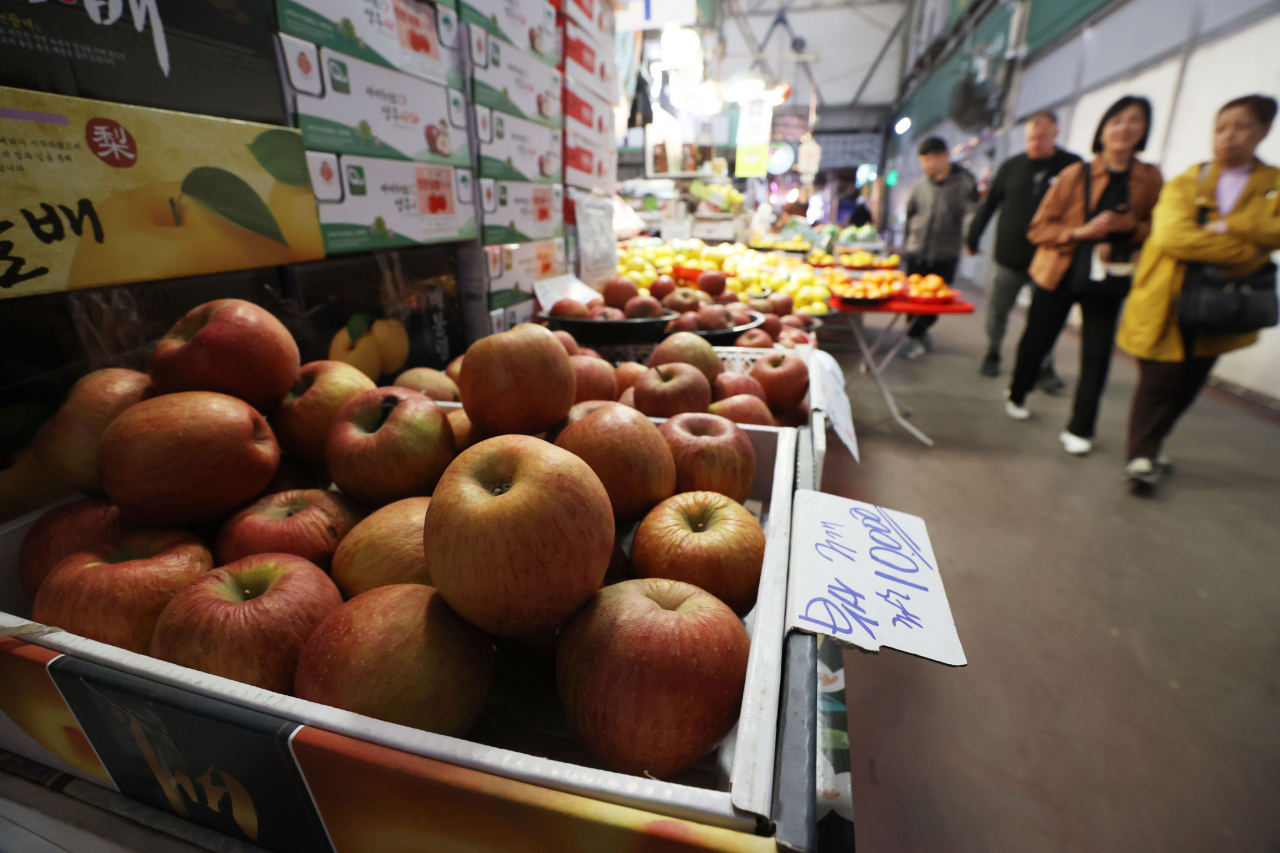Amid deepening apple crisis, S. Korea eyes long-term measures
By Song Seung-hyunPublished : April 11, 2024 - 17:23

This year’s spikes in apple prices have prompted South Korean officials to explore long-term strategies to stabilize fruit harvests.
While the latest price trends are influenced by various factors, including short-term weather events, officials are concerned about a troubling underlying trend: Declining harvests due to shrinking cultivation areas in the country attributed to climate change, a decreasing and aging farming population, among other reasons.
Data released Thursday by the Korea Rural Economic Institute revealed that the amount of land dedicated to apple cultivation is declining, dropping from 33,789 hectares last year to 33,666 hectares this year.
This decrease is less severe compared to the figures for the other five widely consumed fruits in Korea that the data analyzed: pear, mandarin, persimmon, grapes, and peach.
However, this year’s sharp price fluctuations in apples, coupled with their long-established status as the most beloved fruit among Koreans, make them a top priority.
According to Statistics Korea, the retail prices of apples shot up 88.2 percent on-year increase in March, the highest spike since records began in 1980.
Experts blame a perfect storm of factors including cold spring weather, heavy summer rains, and crop diseases for the production downturn, driving prices to unprecedented levels.
For a stable supply of apples in the future, the South Korean government is rolling out measures to keep the apple cultivation area at around 33,000 hectares until 2030.
The Ministry of Agriculture, Food and Rural Affairs is leading the charge, aiming to expand contract farming to 15 tons by 2030 -- tripling last year's output of 5 tons.
Also, in a bid to beat the effect of climate change, the ministry is promoting the northern, mountainous Gangwon Province as a new hub of apple production. Presently, apple orchards are concentrated in the country’s mid-to-southern sections of Chungcheong and Gyeongsang provinces.
Gangwon's share in apple production soared from a mere 0.5 percent in 2005 to 5 percent last year.
The government plans to expand the cultivation area of the five major apple production sites in Gangwon -- Jeongseon, Yanggu, Hongcheon, Yeongwol, and Pyeongchang -- from 931 hectares last year to 2,000 hectares by 2030.
Moreover, the ministry is embracing cutting-edge "smart orchards" in Gangwon and beyond, leveraging technology to slash labor costs by 30 percent compared to traditional methods.
With five new smart orchards slated for next year and a target of 60 by 2030 covering 1,200 hectares, they're set to bolster domestic apple production by 8 percent.
The ministry also noted that these smart orchards plans were established to prepare for the future, anticipating Korea's commencement of apple imports from overseas.
"Once the negotiations are completed, imported apples and pears will inevitably enter the market, and our apples are not very price competitive compared to those from the US or New Zealand," an official from the minsitry Park Soo-jin explained.
"By reducing production costs through smart orchard techniques and minimizing distribution expenses, we aim to gain a competitive edge in pricing."





![[KH Explains] No more 'Michael' at Kakao Games](http://res.heraldm.com/phpwas/restmb_idxmake.php?idx=644&simg=/content/image/2024/04/28/20240428050183_0.jpg&u=20240428180321)





![[Grace Kao] Hybe vs. Ador: Inspiration, imitation and plagiarism](http://res.heraldm.com/phpwas/restmb_idxmake.php?idx=644&simg=/content/image/2024/04/28/20240428050220_0.jpg&u=)








